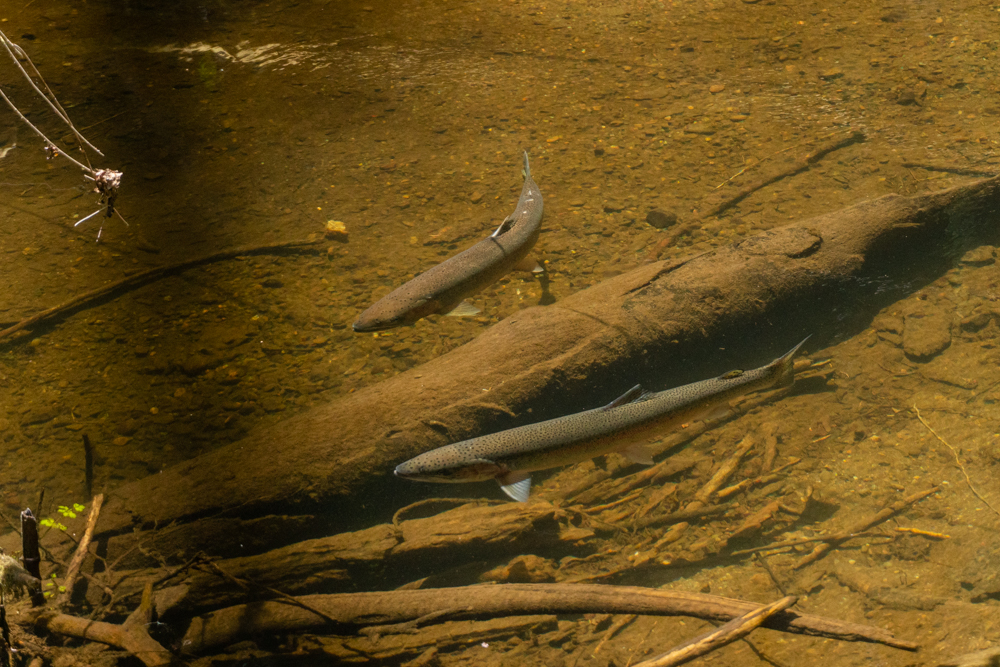By Nathan Barber – Spring 2023
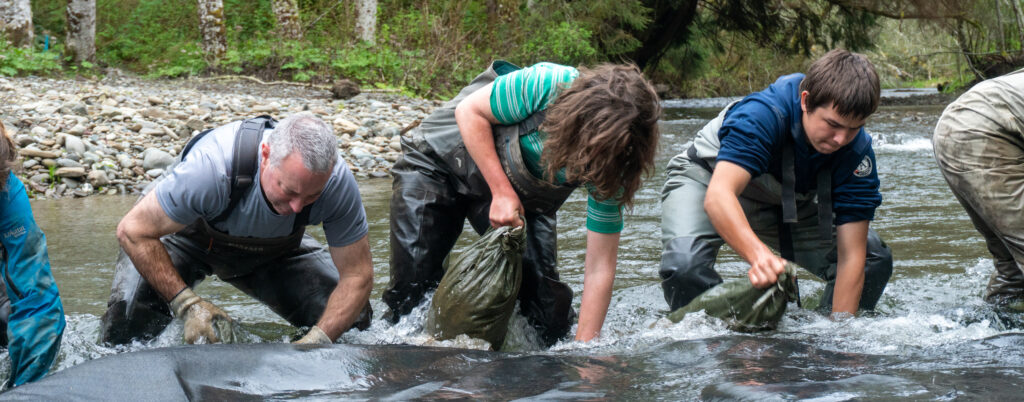
Since 1993, Lower Elwha Klallam Tribe (LEKT) member Mel Elofson, of the Olympic Peninsula, has been surveying outgoing fish populations from the various waterways feeding into the Strait of Juan de Fuca. Though each tribe has its own methods, one of the techniques the LEKT fisheries program uses is what’s called a “Weir Trap.” It’s a series of wire fence panels in a “V” shape that stretches across the river, funneling the smolt into a pipe that leads to a collection tank, some of the staff refer to it as a Big Old Box or “BOB.” Installing these traps takes around 20 people, and usually takes around 6 hours from start to finish, depending on the size of the trap. Each day, the traps at Deep Creek, West and East Twin River and Salt Creek are checked to get a count of how many, and what kinds of smolt are passing through. A ‘smolt’ is a stage of a salmon’s life cycle that comes after the Parr stage, at the 0-3 years of age range, as they make their way out to sea to enter adulthood. A key characteristic is their silvery shine.
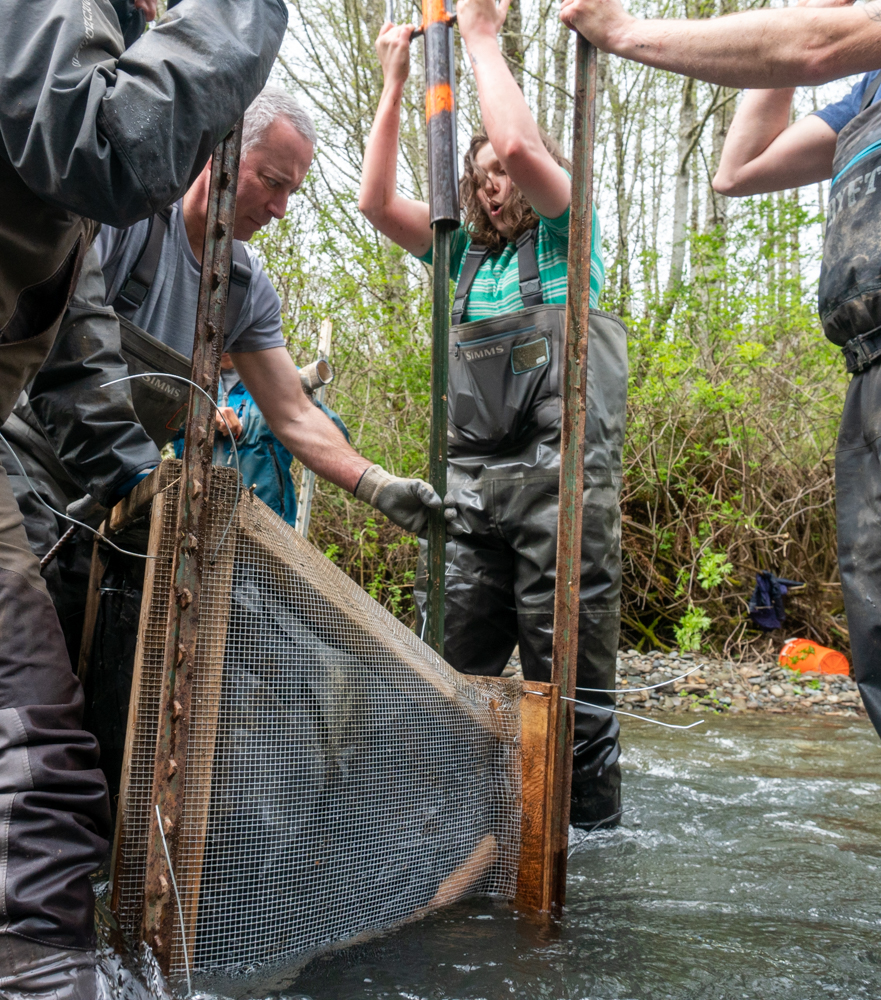
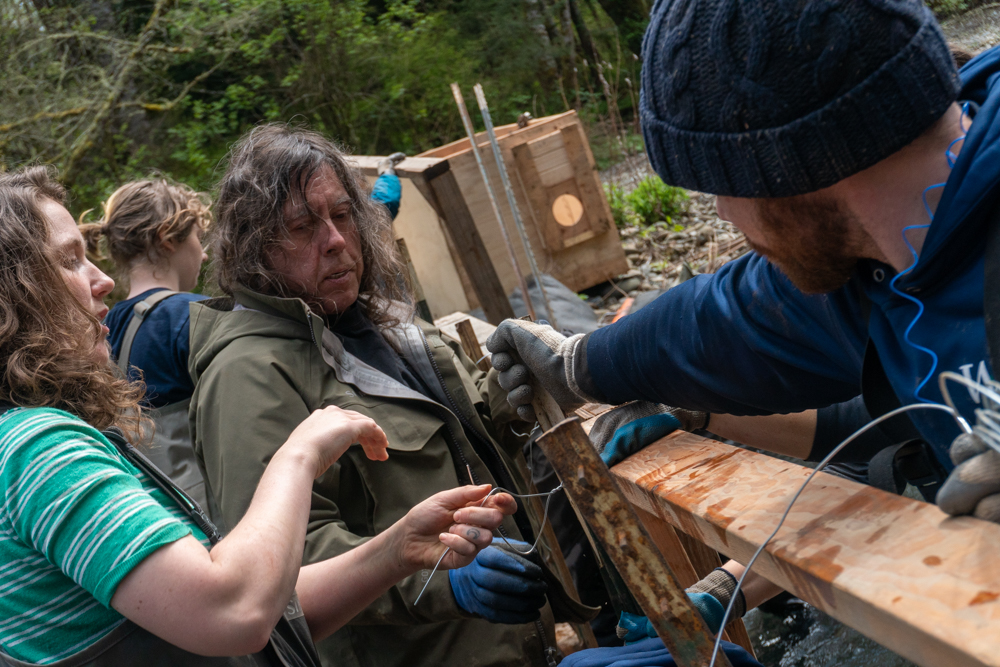
This project is co-managed by the state and several tribes in WA. The data is sent to Olympia, where they will contribute to future management decisions. For people whose livelihoods rely on the fishing season, it’s essential that this data be as accurate as possible. These traps will stay up throughout the spring and into early summer. During peak migration times, there will be upwards of 500, sometimes even more than 1000 fish in a single trap. Though you usually only see those numbers around the third week of May, depending on the location. Salt Creek tends to be the more productive river, and Deep Creek seems to peak a little later than the rest. This could be due to the location of the fish nests (redds) and hatcheries in comparison to the traps. There are other factors that are out of their control such as landslides wiping out fish habitats, which happened upstream of the West Twin River earlier this year, and they’re now seeing the effects of it on the fish population.
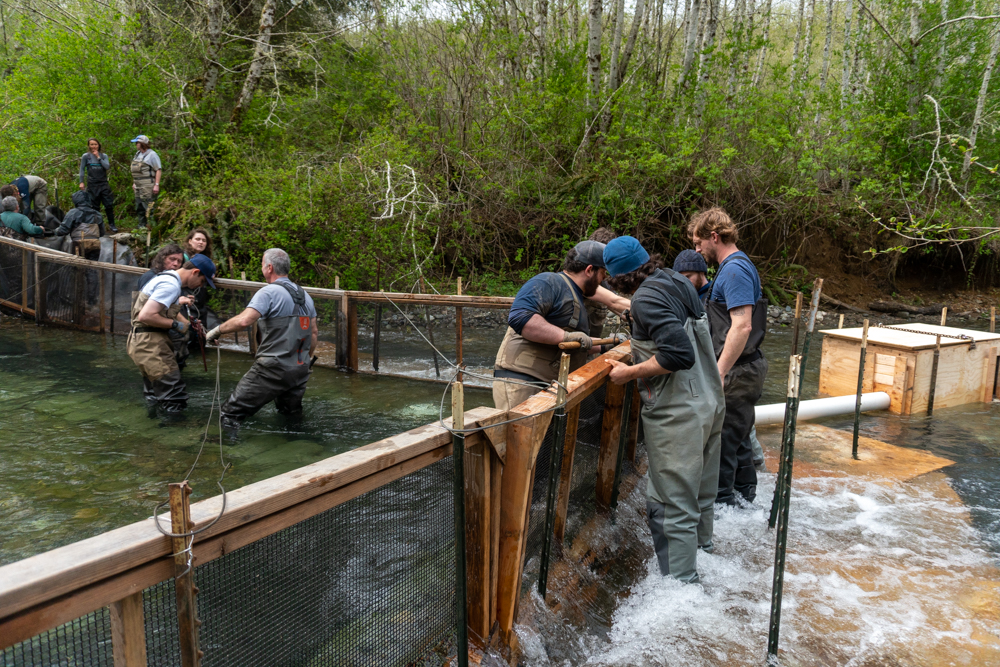
Log jams are essential to a healthy river. During the 1950’s-80’s, Washington State gutted all of the logs from the rivers, which happen to be fish habitats. Fish will use log jams to hide from predators, and to keep their eggs safe. Washington has since then learned from its mistakes. Every year now LEKT will hire a helicopter pilot to drop logs into the river to restore them to their natural state. Using a helicopter is less intrusive than bringing heavy machinery down to the rivers. One of these trips will cost them upwards of $50,000. A small price to pay for nature restoration. They’ll do this with every river they survey, except the West Twin River. That’s their “control” in these studies. Of course, there’s some things you just can’t control, such as a landslide, or birds of prey like Bald Eagles, and Blue Herons who hunt right by these fish traps. Mel mentioned that the difference in outgoing fish populations between the control river, and the rivers with log jams is clear. The Elwha River, for example, has been accumulating a natural log jam of tremendous size, and it’s a sight to behold. Sonny Sampson, an Elder of the Lower Elwha Klallam Tribe was very happy to see such a thing. He reminisced and told me that he’s never seen anything like it in his lifetime. When the Elwha Dam was around, he explained, it wiped out all the fish habitats when they would release the water, leaving the river downstream a barren wasteland. Sonny also pointed out the state fish hatchery right next to us, and you could hear the frustration in his voice build up as he explained how after his grandfather had been forcefully relocated time and time again by the government, he set up a homestead right where the hatchery currently is. Then he was forced to move again. It’s easy for most of us to forget, or be ignorant to how fresh, and severe these wounds are.
When surveying the fish, they’re looking for a few things. They first determine if there are any tagged fish in the collection tank by scanning for what’s called a Passive Integrated Transponder, or PIT Tag. Close to the trap there’s a sensor that the fish will swim over, which will send a signal to a satellite, and then that data is transmitted elsewhere. An issue you might see with this could be if there’s adult tagged salmon that get stuck upstream of the trap they might swim over the sensor dozens of times, sending back false positives. The adults don’t like the traps, and if there’s too many stuck upstream, they have to take a panel out of the trap and shut it down to let the adults pass through. If that happens, they’ll take an average of what’s been passing through and record that data instead. Those are what they call “paper fish,” because they only exist on paper. To my knowledge it’s most often Steelhead that get stuck above the traps, because to my surprise, they spawn more than once before dying, so they tend to be one of the only adult salmon that need to go back downstream. Redundancy is important when it comes to record keeping, so to supplement these installed PIT Tag readers, they use a handheld PIT Tag reader and will pass the fish through it once they’re in a collection bucket. If the light on the device flashes blue, you’ve got a tagged fish and need to record its serial number. Tagged fish and hatchery fish are two different things. To tell the difference there, you can spot a hatchery fish because the adipose fin (the smallest fin between the dorsal and caudal fin) will be missing.
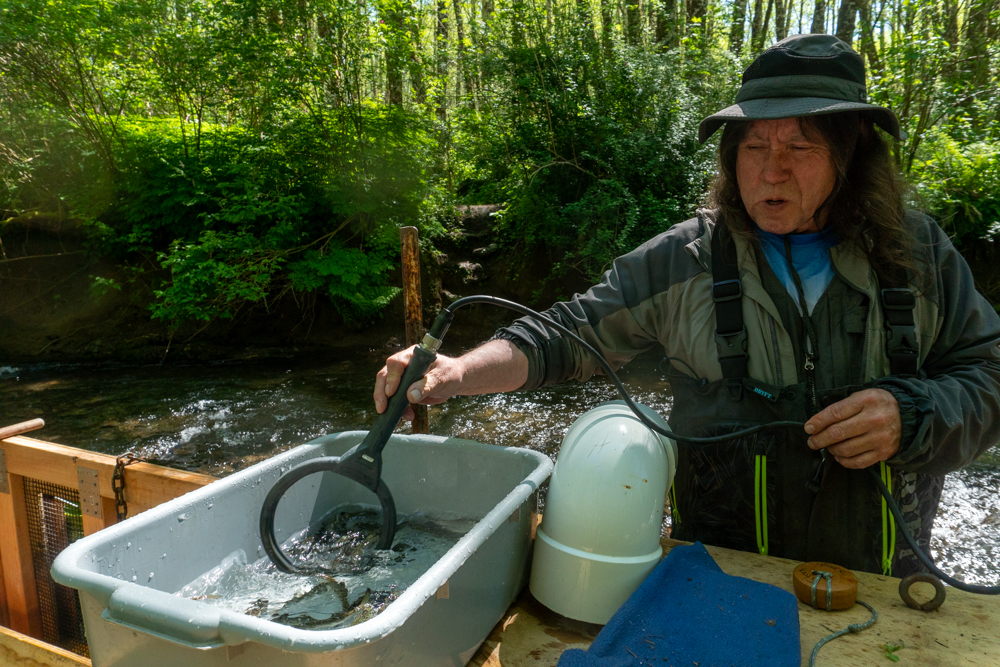
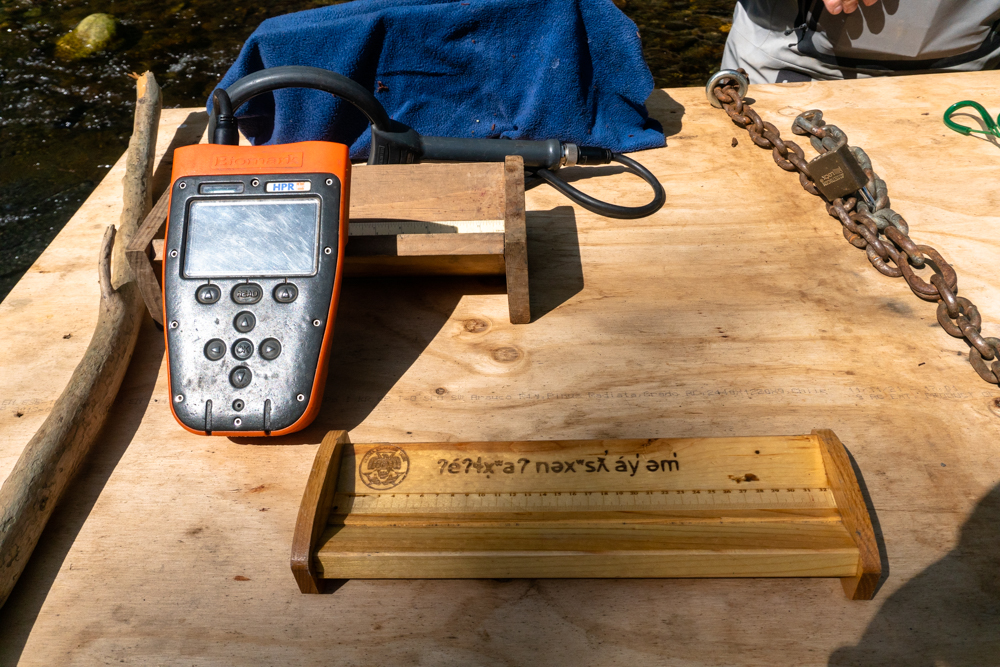
Fish identification is the fun part. If you’re squeamish about touching fish, this is great exposure therapy. A few of the salmon can look nearly identical so it’s important to know how to tell them apart. The most common salmon you’ll find in these rivers is Coho. Peppered with black dots, and oval lighter spots along their lateral line, they’re nearly identical to a Cutthroat, and a Mykiss Trout, except for two key characteristics. Both Cutthroats and Mykiss will have orange fins, that’s the giveaway that you’re not looking at a Coho smolt. The defining feature of the Cutthroat is that they have an orange slash under its head, resembling a “cut throat”, hence their name. Cutthroats are unique in the sense that some of them never head out to sea. They’ll live their lives in the river and are referred to as “Resident Cutthroats” or “Cuttys.” Another one is the Steelhead smolts. The best way to tell them apart is by the fact that their dots extend to their caudal fins, and tend to be a little larger and shinier than the others. Those are the four different types of salmon in these traps. Sometimes you might see an adult resident Cutthroat in the trap. You’ll also find a handful of Prickly Sculpins, and even a Pacific Lamprey if you’re unfortunate. It’s not really unfortunate, they’re just creepy. A jawless fish with a suction cup type mouth, they evolved over 450 million years ago, making them one of the oldest lineages in the world. They don’t pose a threat to the fish in the collection tank.
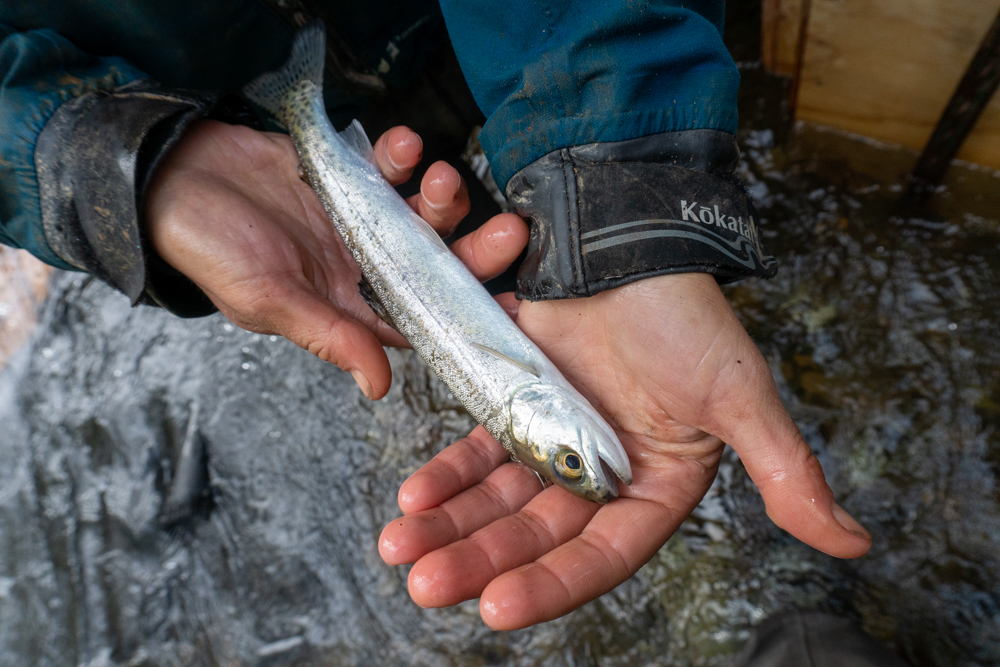
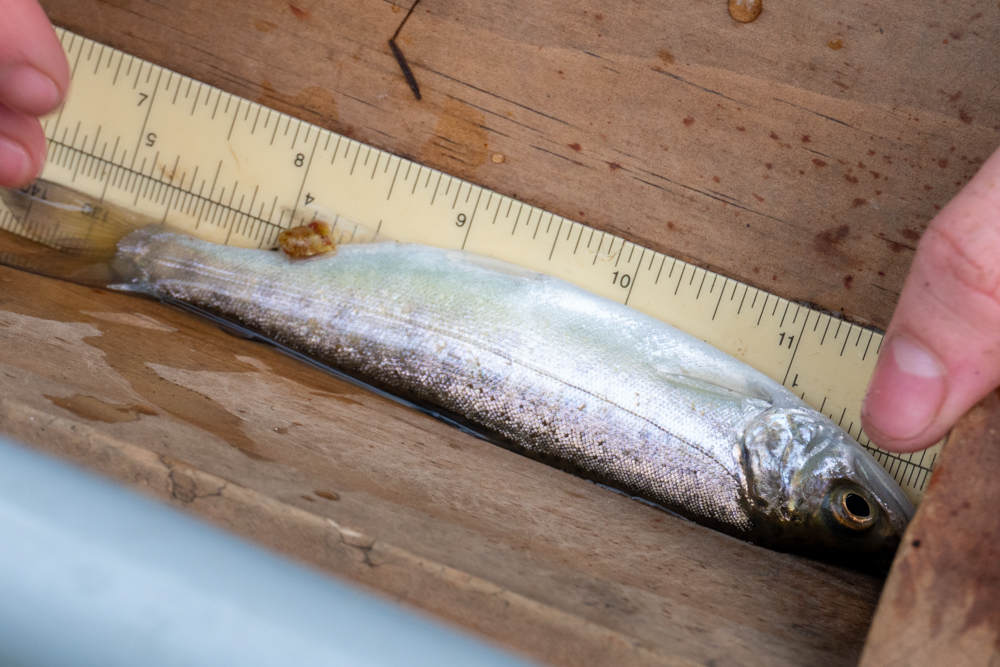
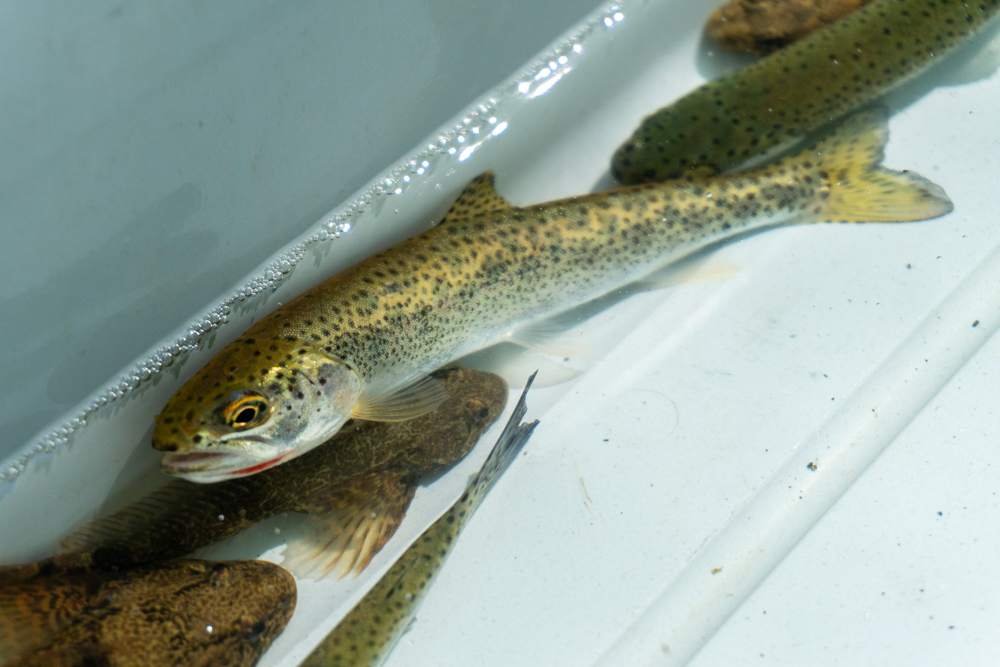
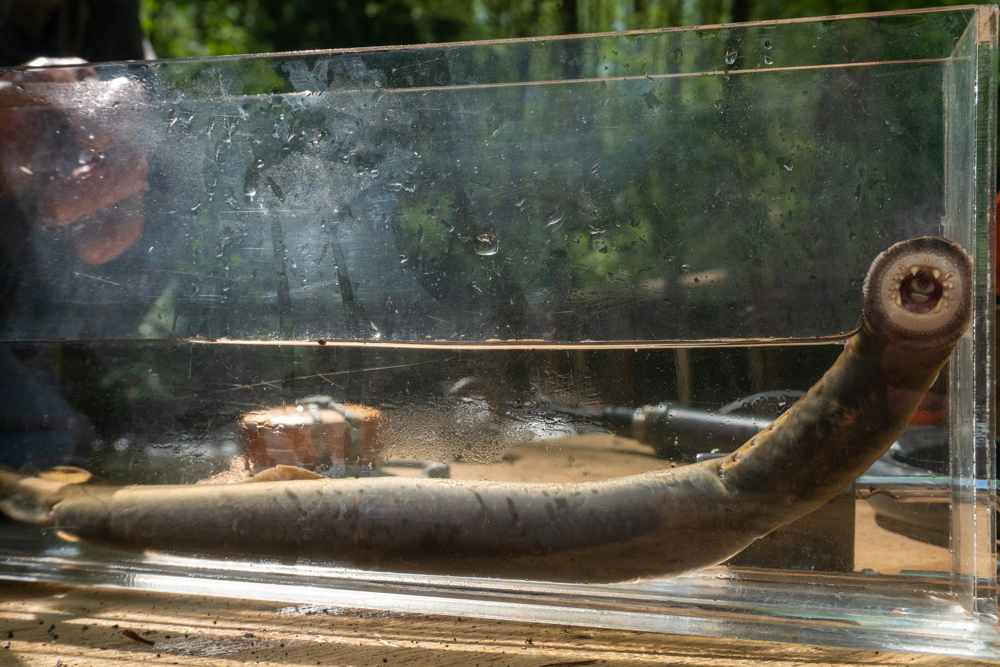
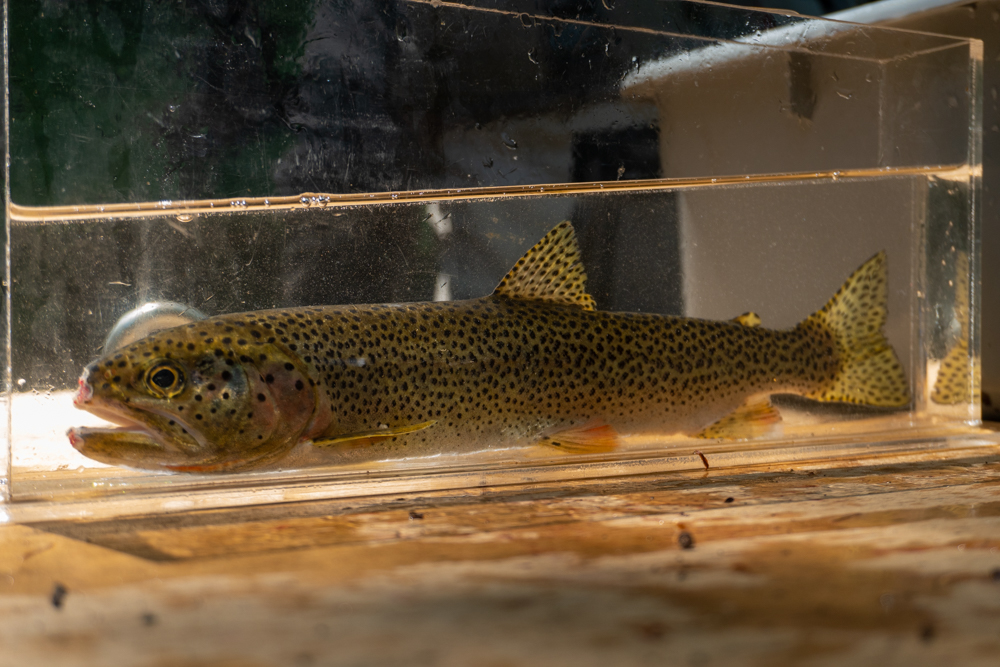
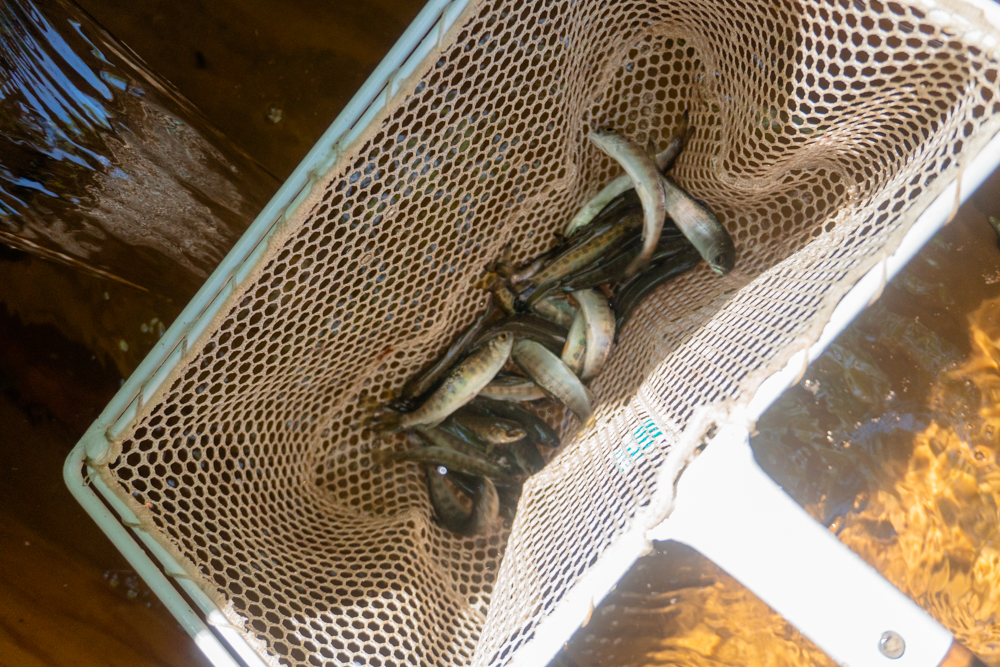
The focus in these rivers though is the Coho. When surveying the traps, Mel was most concerned about “bismarcking” 50 Coho salmon every time we went out. This is a process of putting the Coho in a bucket with a safe, orange dye for 30 minutes, then taking them about 100 meters upstream to release them as part of a trap efficiency test. Eventually, they should survey 50 dyed Coho. If the numbers don’t add up, then there must be a hole in the fence somewhere and it needs to be fixed as soon as possible. If the fish find a hole, they’ll exploit it in the masses, which means lower certainty for the data that informs fishing regulations. For people whose livelihoods rely on the fishing season, accuracy in these surveys is essential. This is one of the many important pieces of information considered in management decisions.
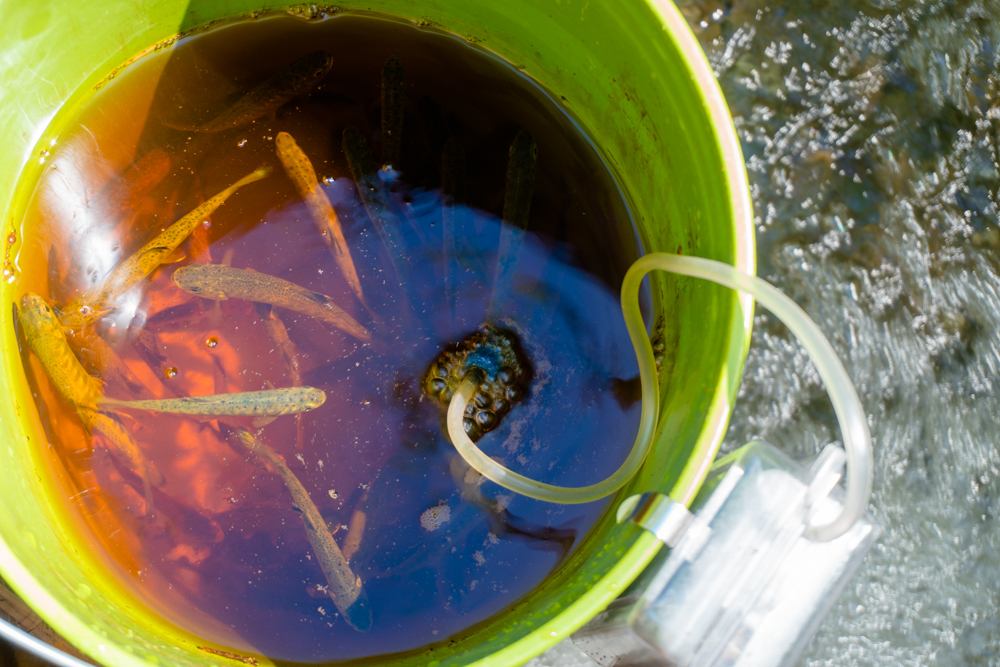
These traps will be taken down mid-June as the fish stop migrating out. If you ever want to get more involved with Elwha River and other fish habitat restoration, look into volunteering with the Lower Elwha Klallam Tribe. If you’re interested, reach out to their Science Outreach Coordinator Chelsea Behymer at chelsea.behymer@elwha.org. It’s a great way to learn about your local environment, and feel like you’re a part of something bigger. There’s plenty of work to go around.
Bonus Photo
